by Keith Widyolar
September 4, 2020
“Vida Americana Mexican Muralists Remake American Art, 1925-1945” is an exhibition at the Whitney Museum of American Art from February 17, 2020 through January 31, 2021.
It was interrupted by the COVID-19 Pandemic, but has been extended so you can see the exhibition now that the Whitney has reopened.
Vida Americana Changes Art History
We have always been taught in the United States that American art derives from European art. Paris was the world’s art capital until 1945, when World War II shifted the art world’s center of gravity to New York.
The “Vida Americana” show and the academic work that went into it changes art history. The Whitney team says it out loud.
This exhibition is really rewriting art history. There’s been the common assumption that the French were the influence on American art during the first half of the twentieth century. Vida Americana changes that narrative to show that it was the Mexican artists that had the most profound, pervasive influence on the art of this country.”
Barbara Haskell, Curator, Whitney Museum of American Art, February 2020
Let that sink in a minute, and note that this is a highly respected curator at the Whitney Museum of American Art.
The Mexican Muralists
The Mexican Revolution (1910-1924) was set in motion by the obscene corruption of the Porfirio Díaz presidency. (Sound familiar?) Like all revolutions, the Mexican Revolution was a long and bloody mess. Its ending and new political ideas for organizing a more fair and just society unleashed a burst of creative energy.
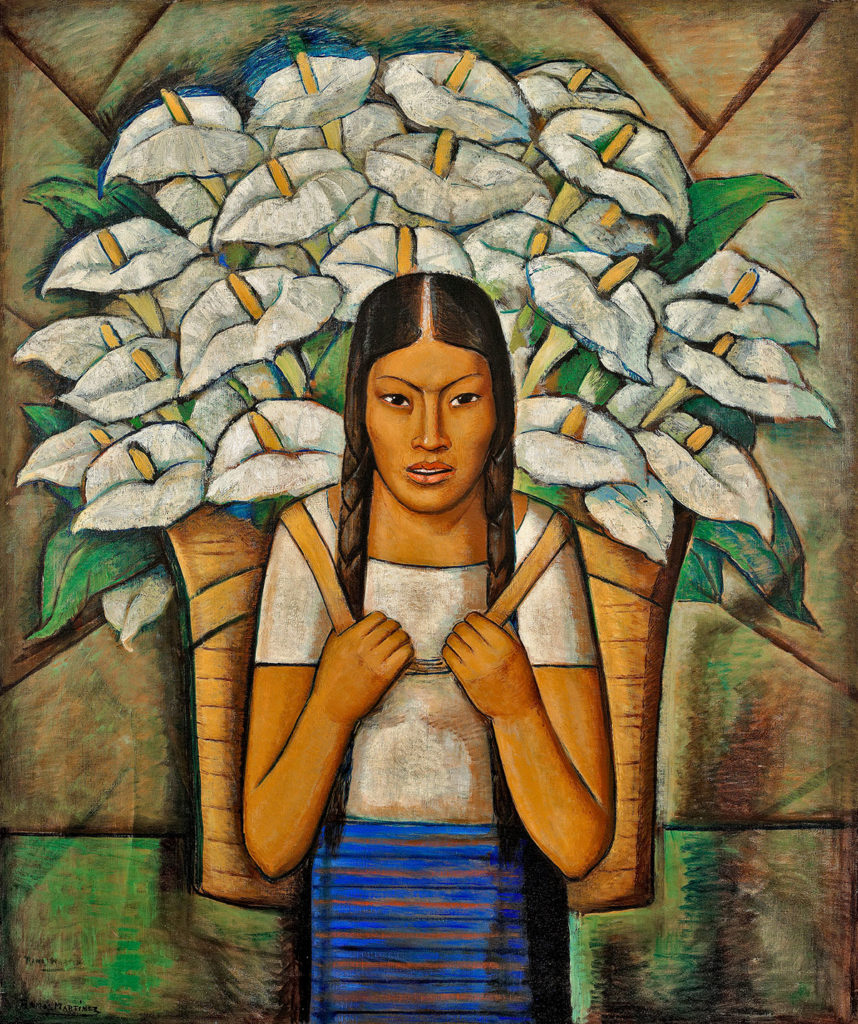
Exactly like in our country today, Mexico was faced with the task of building a unified nation from a diverse people of color who had long been suppressed and abused by White supremacist colonizers.
The new Mexican government used murals to project a unifying and inspiring Mexican identity to its multicultural (mostly Indigenous) society. Mariachi music was used in the same way as radio arrived in Mexico.
In a way, that’s what we do at New York Latin Culture Magazine. Our ideas don’t necessarily reflect the reality on the street, but they represent unifying dreams that we want to make real. Humans have this superpower to make things real by thinking > speaking > doing.
José Vasconcelos, the Secretary of Public Education at the time, came up with the mural idea. Mexico has a pre-Hispanic tradition of monumental art. Local artists had developed their own Mexican style during the Colonial Baroque period. You can usually see some of these Mexican-made Baroque paintings in the New York art auctions, and architecture if you visit colonial Mexico.
Murals were a way to communicate with a mostly pre-literate society. Even if the meanings are not written out, everyone undersood because all humans generate and respond to the same archetypal symbols (Carl Jung).
The Mexican lilies carried by Indigenous people in this exhibition are an example. Lilies are a universal symbol of rebirth. The paintings with lilies are saying: be proud of who you are (Indigenous people), work hard (compositions of people working) and thereby give birth to a better country (white lilies).
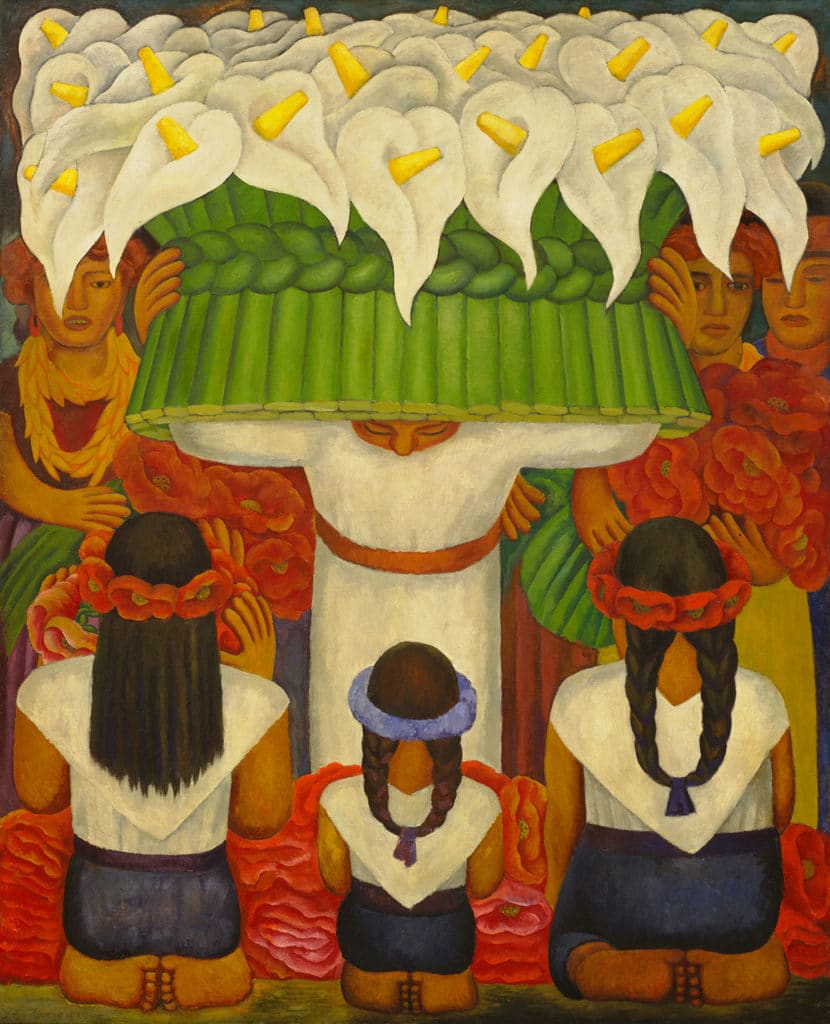
The Diego Rivera painting with lilies puts children in the foreground. He is saying, show our children how to work. Your labor will create this better world for them.
A Moment of Cultural Exchange
The stars of Mexican muralism, “Los Tres Grandes” (The Big Three), were José Clemente Orozco, Diego Rivera and David Alfaro Siqueiros. News reports of the power of their work drew thinkers and artists from America and Europe to see what was going on. Surrealists André Breton and Salvador Dalí, photographers Robert Weston and Tina Modotti and German-American Bauhaus colorist and art teacher Josef Albers visited Mexico. Many visited Diego Rivera and Frida Kahlo. The Mexican father of Latin American photography, Luis Àlvarez Bravo rose to prominence in this time. It was a moment of cultural exchange.
Josef Albers, the Bauhaus Teacher who Trained a Generation of American Artists was Influenced by Pre-Hispanic Architecture
Josef Albers taught a generation of American artists at Black Mountain College in North Carolina and at Yale University. His book “Interaction of Color” is still used to teach color theory. In the “Josef Albers in Mexico” exhibition of 2017, Guggenheim curator Lauren Hinkson made the connection that Albers’ geometric design motifs were inspired by the designs he saw in the ruins of ancient American civilizations he saw in Mexico and Peru. Nobody knew, but she saw his personal photographs. The connection between his travel pictures and subsequent work is obvious.
When the Mexican government changed, commissions dried up and the muralists came to the United States looking for work.
A Connection to African American Artist Jacob Lawrence
The team makes a connection with African American artist Jacob Lawrence. He was inspired by the Mexican muralists to make monumental art with an aspirational social message.
You can draw that line all the way to Kehinde Wiley, Obama’s portraitist, who makes monumental paintings of Black men and women as heroic figures. There is one at Ginny’s Supper Club in the basement of the Red Rooster in Harlem. OMG, it’s a Kehinde Wiley! If you can see some of the big ones, they will blow your mind. Interestingly Wiley made a heroic statue called “Rumors of War” that was exhibited in Times Square in September 2019 before Black Lives Matter blew up into American consciousness.
Art both responds to the present and foretells the future. We create the symbols of what we want to make real. That’s what the Mexican Muralists did and what they inspired American artists to do.
Lawrence’s famous “Migration Series” just opened at MoMA. He was inspired by the Black migration north to Chicago and New York to escape the brutal “Jim Crow” racism of the American South. It’s very relevant to Black Lives Matter and Latin American migration now.
From Clemente Orozco and Siqueiros to Pollock
The Whitney team solved the problem of how to exhibit frescoes by scanning some originals and reproducing them inside the Whitney. In the case of José Clemente Orozco’s “Prometheus” (1930), which is painted inside the Frary Hall at Pomona College in Southern California, the Whitney constructed an arch so visitors can see the work the way it was installed.
New York City has its own Prometheus, the Greek deity who stole fire from the gods and gave it to humankind. Our Prometheus watches the skating rink/terrace in Rockefeller Center. It’s one of the symbols of New York City.
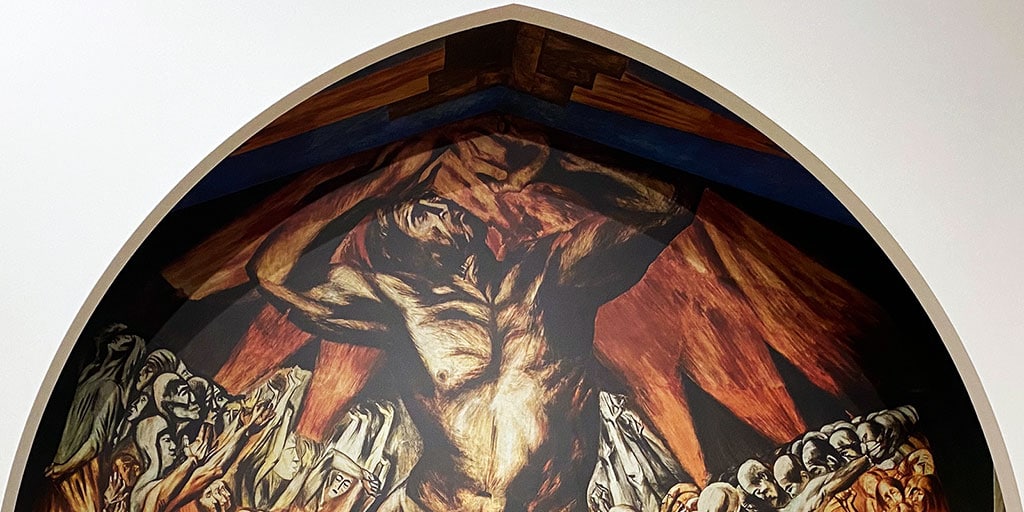
Whitney curator Barbara Haskell connects the drama in the work of José Clemente Orozco with American artist Jackson Pollock. Pollock once went to see “Prometheus” in Pomona, California. Haskell says he called it, “the best painting in the contemporary world” and kept a picture of it in his studio in the 1930s.
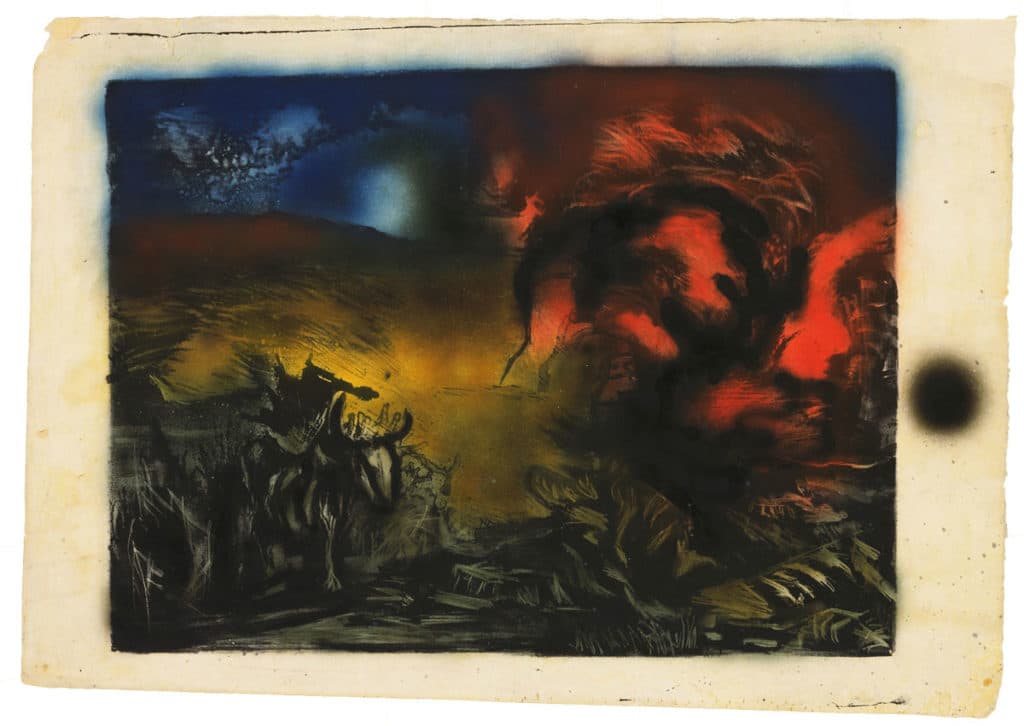
The curator further explains that Siqueiros led an experimental workshop in New York in the 1930s where the attendees put canvas on the floor and splattered it with paint. They completely freed themselves from any boundaries around art.
Pollock was one of the attendees. His later drip action paintings are some of the most iconic American art. Haskell suggests that Jackson Pollock was inspired by the drama in a Clemente Orozco painting and the artistic freedom he learned from Siqueiros.
Most people’s initial reaction to seeing their first Pollock action painting is that I could do that. But you can’t. Pollock put layers of drama into those paintings. It may have looked like he was just throwing paint, but in order to do that so casually, he had to practice until he developed muscle memory. Then he had to open himself spiritually to let the chariots of the gods flow through him onto the canvas. It’s like he was painting with the fire of Prometheus himself.
Diego Rivera’s Revenge
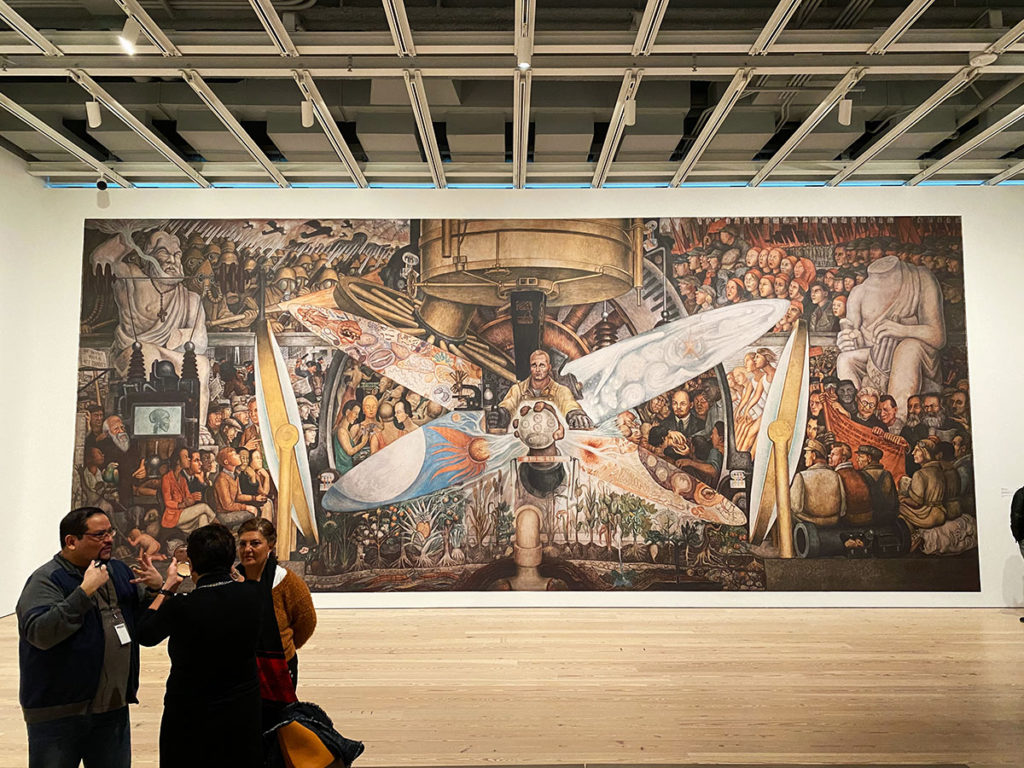
The biggest piece in the show is a floor to ceiling print of Diego Rivera’s “Man, Controller of the Universe” 1934, scanned from the painting in the Palacio de Bellas Artes in Mexico City.
Rivera painted it there after his original fresco inside Rockefeller Center was destroyed because he put Lenin in the painting. Nelson Rockefeller had it torn town in 1934 when Rivera refused to remove Lenin. Diego and his iconic wife Frida Kahlo left New York disillusioned after this. Anyway, this is the most famous New York painting that you will never see, but in a way, here it is. It’s Diego’s Revenge for being cast out of Rockefeller’s heaven.
A Call to Arts
The Whitney didn’t used to give Latin artists a second glance, but now seems to be making up for lost time.
By naming the exhibition “Vida Americana” (American Life) and showing it now (even though the curators couldn’t have known that social issues were going to blow up like they have), the Whitney Museum of American Art is calling a new generation of artists of all colors to see the Mexican muralists, to be inspired like the great American artists of our recent past, and to paint, to draw the future we dream of into the present.
Wow. This is what we want from art. This was also the dream of the Mexican muralists. Isn’t it strangely wonderful how so many more of us are now dreaming together?
See the exhibition. See the past and see our shared future. Then start painting. “It’s up to you, New York, New York.” What you create now will become the New York Renaissance.
Jerry Salz on Vida Americana
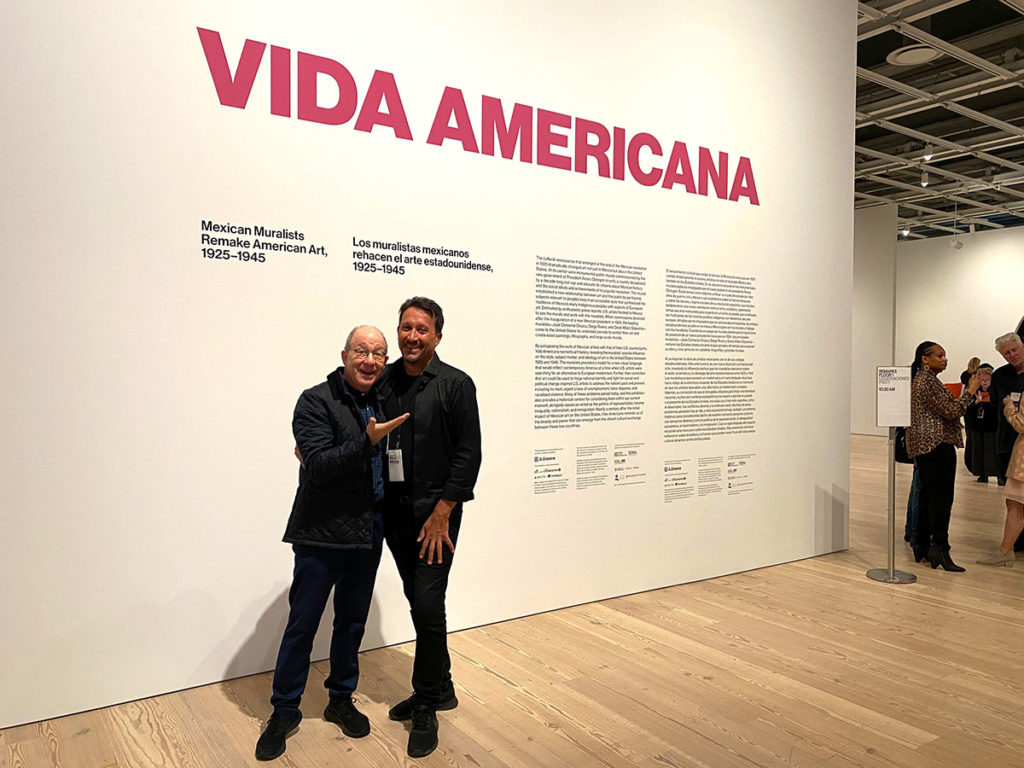
At the press preview, we asked Jerry Salz (Instagram), one of the most famous American art critics (New York Magazine, Village Voice, Pulitzer Prize for Criticism), what he thought about the exhibition. He said, “It’s the most timely show of the year.”
It’s the most timely show of the year.”
Jerry Salz (New York Magazine, Village Voice, Pulitzer Prize for Criticism), February 11, 2020
We followed up with, “Would you ever expect the Whitney to say that Mexican muralists were a bigger influence on American art than the Europeans? He answered, “Yes, you would. They are far out in front of everybody. You could see it coming.”
